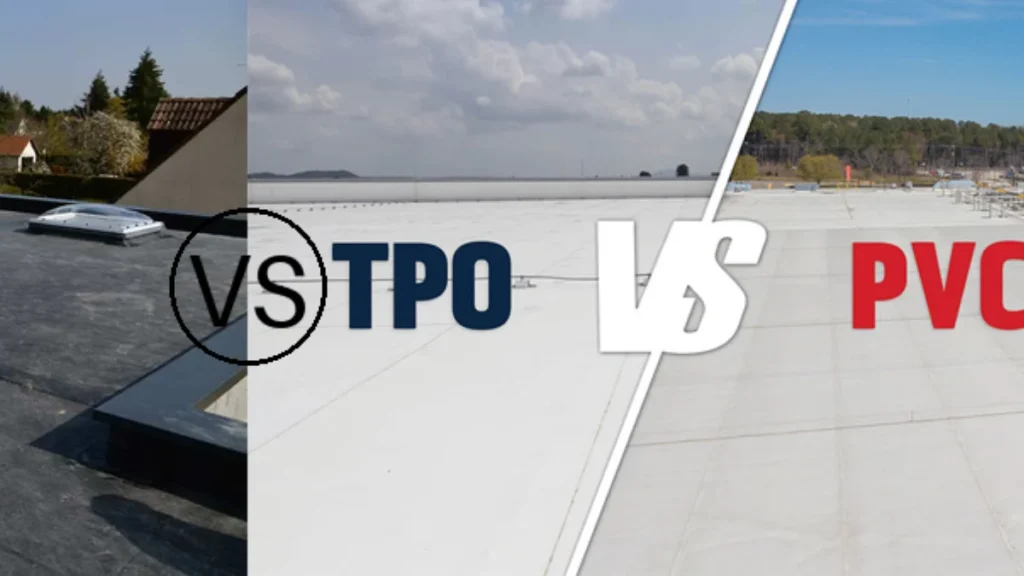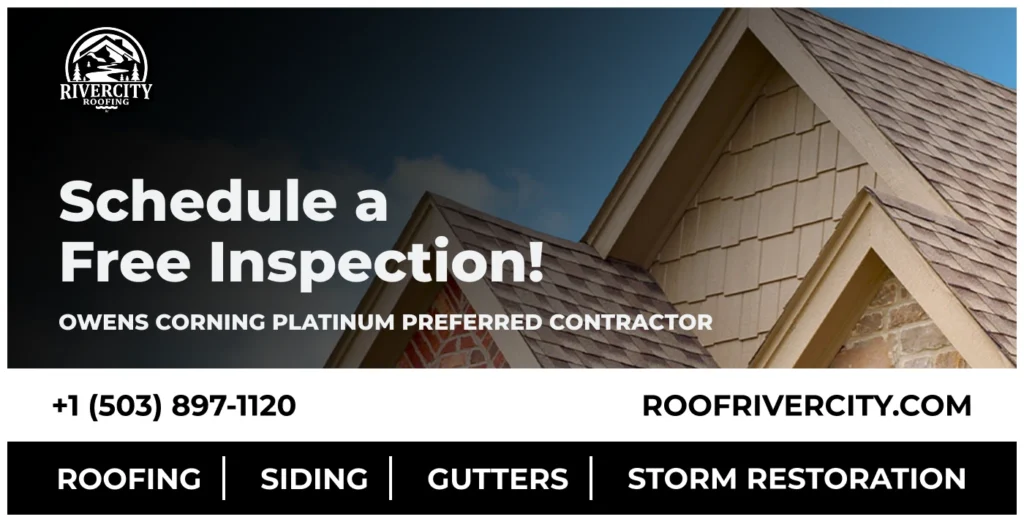EPDM roofing systems have proven reliable for over 60 years. TPO is still new to the market, and PVC roofs can protect your building for up to 50 years. These lifespan differences between EPDM, TPO and PVC roofing raise key questions for property owners.
These roofing materials each have their strengths. TPO’s popularity has grown in the past 20 years because it’s economical and energy-efficient. EPDM works best during winter months with its excellent insulation. PVC costs more but comes with top safety ratings and exceptional durability.
Let’s get into these three roofing materials and compare how durable they are, what maintenance they need, and their long-term value. This piece will help you pick the right roofing system that matches your needs and local climate.
Material Composition and Durability: EPDM vs TPO vs PVC
The chemical makeup of roofing membranes plays a key role in how long they last, how well they stand up to weather, and their overall lifespan. Property owners who know these differences can make better choices between EPDM vs TPO vs PVC roofing systems that match their needs.
Chemical Structure and Weather Resistance
EPDM (Ethylene Propylene Diene Monomer) comes from oil and natural gas as a synthetic rubber. The combination of ethylene propylene and diene creates a flexible membrane that stretches well. This thermoset material stays flexible even in extreme temperatures, which makes it tough against weather.
TPO (Thermoplastic Polyolefin) is different. It combines polypropylene and ethylene-propylene rubber polymers. Manufacturers add fillers to make the final roofing membrane. TPO can soften with heat and harden when cool because it’s thermoplastic. This property affects how well it performs in hot weather over time.
PVC (Polyvinyl Chloride) roofing has two main parts: chlorine from common salt and ethylene from natural gas. Plasticizers make PVC membranes more flexible than their natural rigid form. PVC has showed great results in all types of weather since the 1960s – that’s over 50 years of proven performance.
Thickness Options and Impact on Longevity
Thickness affects how durable these roofing membranes are by a lot. EPDM comes in thicknesses from 30 mils (0.75 mm) to 100 mils (2.54 mm). A 45-mil membrane works well for standard homes that don’t see much foot traffic. Commercial buildings often need 60-mil or 90-mil options to better resist punctures.
You can get TPO membranes in 45, 60, 72, 80, and 90-mil thicknesses. TPO has three layers: a polymer base, a polyester reinforced fabric center (scrim), and a waterproof top layer. Research shows thicker TPO membranes are worth more because they provide better waterproofing protection.
PVC roofing usually comes between 36 and 90 mils thick, and most installations use 50-mil material. PVC’s breaking strength is a big deal as it means that it tops 350 pounds per square inch—way above the industry’s 200-pound minimum requirement.
Seam Technology and Failure Points
Seams can be the biggest problem in roofing systems. Every 10,000 square feet of roof has about 15,000 linear feet where seams might fail. Each material uses different seaming methods, which affects how well they last.
PVC and TPO use heat-welding to join seams. Hot air melts overlapping pieces together. These welded seams become stronger than the rest of the roof when done right. The roof can also expand and contract with the building thanks to this welding process.
EPDM works differently. It needs adhesives or seam tapes to install. This makes EPDM roofs more vulnerable as they age. UV exposure can make the membrane shrink and pull away from edges and flashings.

UV and Chemical Resistance Comparison
These three membranes all fight UV rays, but each performs differently. EPDM roofs contains carbon black, which helps it resist UV rays and stay flexible for decades. Notwithstanding that, UV exposure will eventually break down EPDM, causing cracks and making it less flexible.
TPO includes UV light inhibitors and reflects light well at first. But in industrial areas, unwashed TPO roofs lose about 40% of their reflectivity over three years. Certain chemicals can also weather TPO faster than normal, and it soaks up greases and oils, which leaves stains.
PVC handles chemicals better than EPDM and TPO. Most chemicals don’t affect it, which makes it perfect for restaurants, airports, and industrial buildings. PVC also fights bacteria, various chemicals, and fire better than other single-ply membranes. Greases and oils can make PVC sheets harder over time by pulling out plasticizers, but special PVC-KEE formulations offer better chemical resistance where needed.
Free Roof Inspections. Fast. Reliable.
Is your roof ready to weather the storm? Dont risk property damage. Our free roof inspections provide expert analysis to identify potential issues before they become costly problems.
Environmental Factors Affecting Roofing Lifespan
Weather conditions play a huge role in how long commercial roofing systems last. Each type of membrane reacts differently to environmental challenges. The way roofing materials interact with local weather patterns determines if a roof will last as long as expected.
Performance in Extreme Heat Regions
TPO roofing shows both strengths and weaknesses in areas with intense sun exposure. Its energy-efficient white surface reflects sunlight well. However, the Midwest Roofing Contractors Association has warned that TPO might deteriorate from high heat and UV exposure. This weakness raises questions about using it in hot climates.
EPDM’s carbon black composition makes it highly resistant to UV radiation and ozone. This allows it to stay flexible for decades. Notwithstanding that, its black color absorbs heat instead of reflecting it. This could lead to higher cooling costs in warmer areas. Buildings in high-temperature regions need to balance durability against energy efficiency.
PVC membranes might be the best choice for hot climates. These membranes resist punctures and heat well, and they have both Energy Star and Cool Roof ratings. Their highly reflective surface helps cut cooling costs while staying strong under extreme heat. So, PVC often becomes the top choice for buildings in sunny environments.
Cold Weather Impact on TPO vs EPDM vs PVC
Winter creates unique challenges through freeze-thaw cycles, thermal shock, and ice formation. EPDM works exceptionally well in cold weather and keeps its shape even in extreme temperatures. It can expand and contract as temperatures change without cracking or tearing.
PVC doesn’t handle cold as well. Old or cold PVC can become brittle and might puncture or even shatter. This becomes a bigger issue once a PVC roof is about ten years old, so winter inspections are crucial.
Thermal shock affects all roofs differently. Quick temperature changes between day and night make roofs expand and contract “like clockwork.” This can cause cracks, shrinkage, and stress on seams. The constant cycle weakens the roof membrane’s strength. Proper installation and regular maintenance become vital in areas with unpredictable temperature patterns.
The freeze-thaw cycle creates another big challenge. Melting and refreezing snow can add up to 60 pounds of weight per cubic foot to the roof. Water stuck between roofing layers might freeze and expand. This can “bust” seams and create gaps that lead to leaks. Even well-installed membranes can suffer damage from expanding frozen water if drainage isn’t good.
Moisture and Ponding Water Resistance
Water that stays on a roof for 48 hours or longer is called ponding water, and it threatens all roofing systems. Whatever the membrane type, standing water speeds up deterioration in several ways:
- Structural Stress: Extra water puts more load on the roof, which can bend the deck and weaken the structure
- Biological Growth: Long-term moisture leads to algae and plant growth that can damage membranes chemically and physically
- Accelerated Aging: Standing water makes sunlight stronger, causing more UV damage to the membrane
- Seam Vulnerability: Algae growth particularly hurts the seams of single-ply membranes like TPO and EPDM
PVC handles ponding water better than the others. Its chemically welded seams stay waterproof even after long exposure. EPDM and TPO’s adhesive seams tend to break down faster when repeatedly exposed to standing water.
A good drainage system helps every type of roof last longer. Experts say 90% of water should drain within 48 hours after rain. Regular checks and maintenance of drains, scuppers, gutters, and downspouts work best to prevent ponding damage.
Maintenance Requirements and Lifespan Extension
Proper maintenance is the life-blood of extending commercial roofing systems’ lifespan. The most durable materials need specific care to last longer. Each roofing type needs its own maintenance plan to protect against specific weaknesses.
Inspection Frequency by Roofing Type
EPDM roofing needs inspections twice a year, best done in spring and fall. These seasonal changes put extra stress on roofing systems. Inspectors should pay special attention to seams since EPDM roofs often have adhesive seam failures within five to ten years after installation.
TPO roofs need professional inspections once a year. The property owners should also get extra inspections after major weather events like hail storms, tornadoes, or heavy snow. Good maintenance can add 5-10 years to a TPO roof’s normal life.
PVC roofing works best with twice-yearly inspections in spring and fall. Inspectors should check the entire membrane surface for cracks, punctures, or loose seams that might compromise the roof’s strength.
Common Repair Needs: EPDM vs PVC vs TPO
EPDM roofs usually fail at the seams as adhesives break down over time. The biggest problem happens when glued seams fail because of freeze-thaw cycles or age. The roof also needs regular cleaning to stop debris from trapping moisture against the membrane.
PVC roofing usually needs attention around flashings, edges, and spots where things like vents and HVAC units go through. These areas show wear first and need careful inspection. Cold climates can make PVC brittle as it ages, which might lead to punctures or cracks.
TPO’s main issues involve its seams, which need regular checks to stay waterproof. The system can also develop problems with membrane shrinkage, blistering, and cracking after long UV exposure.
Water pooling threatens all three roofing types substantially. Standing water puts too much stress on membranes and leads to stretching, sagging, and weakening of the material. Good drainage maintenance matters for all membrane types.

Professional Maintenance vs DIY Options
Of course, building owners can handle simple maintenance tasks for all roofing types:
- Remove debris from roof surfaces each season
- Clear leaves and other materials from drains and gutters
- Look for obvious damage
- Document and photograph problem areas
Professional contractors should handle the complex maintenance work. Experts point out that DIY commercial roof repairs often void warranties and can cause more damage. Manufacturers want certified professionals to do the maintenance to keep warranty coverage.
Professional roofers know specific material requirements that property owners might miss. Their expertise helps spot subtle issues untrained eyes might not catch. They also have the right safety equipment and know proper protocols for roofing work.
The best maintenance program combines professional inspections with owner monitoring. This catches small issues before they become expensive problems and makes roofs last longer. In fact, good maintenance helps EPDM roofs last 20+ years, PVC systems reach 30 years, and TPO roofs go beyond their usual 10-year life.
Comparison Table
| Feature | EPDM | TPO | PVC |
|---|---|---|---|
| Material Composition | Synthetic rubber from oil and natural gas | Blend of polypropylene and ethylene-propylene rubber polymers | Polyvinyl chloride with plasticizers |
| Available Thickness | 30-100 mils | 45-90 mils | 36-90 mils |
| Seam Technology | Adhesives or seam tapes | Heat-welded | Heat-welded |
| UV Resistance | Excellent (contains carbon black) | Strong at first, drops 40% reflectivity within 3 years | Good |
| Chemical Resistance | Moderate | Poor (absorbs greases/oils) | Superior |
| Heat Performance | Absorbs heat while staying flexible | Degrades under high heat | Excellent heat resistance |
| Cold Weather Performance | Excellent flexibility | No specific data available | Brittle as it ages |
| Ponding Water Resistance | Moderate with vulnerable seams | Moderate with weak seams | Superior |
| Typical Lifespan | 20+ years | 10+ years | Up to 30 years |
| Required Inspection Frequency | Every 6 months | Yearly minimum | Twice per year |
| Common Repair Issues | Seam wear, adhesive failure | Seam problems, shrinkage, blisters, cracks | Flashing damage, cold brittleness |
Conclusion
Different roofing systems come with their own unique benefits. The choice between EPDM, TPO, and PVC depends on your building’s needs and environmental conditions. EPDM’s exceptional performance in cold weather and 20+ year lifespan make it stand out, though its black surface tends to absorb rather than reflect heat. TPO delivers affordable solutions and good original UV protection, but needs careful maintenance because it can deteriorate from heat exposure. PVC proves the most durable choice and can last up to 30 years while resisting chemicals and standing water better than other options.
Your local climate will determine how well each roofing system performs. Property owners in warmer regions might prefer PVC’s heat resistance and reflective qualities. EPDM’s flexibility and durability work better in colder areas. TPO offers a balanced solution, though you should think about local weather patterns and your ability to maintain it properly.
Professional maintenance is a vital part of any roofing system’s success. Having inspections twice a year, fixing problems quickly, and managing drainage properly can extend your roof’s life by a lot beyond standard expectations. The original costs vary between these options, but long-term value depends more on quality installation and regular maintenance than your choice of material.


![EPDM vs TPO vs PVC Roofing: Which Lasts Longest? [2025 Guide]](https://roofrivercity.com/wp-content/uploads/2025/04/epdm-vs-tpo-vs-pvc-roofing.webp)